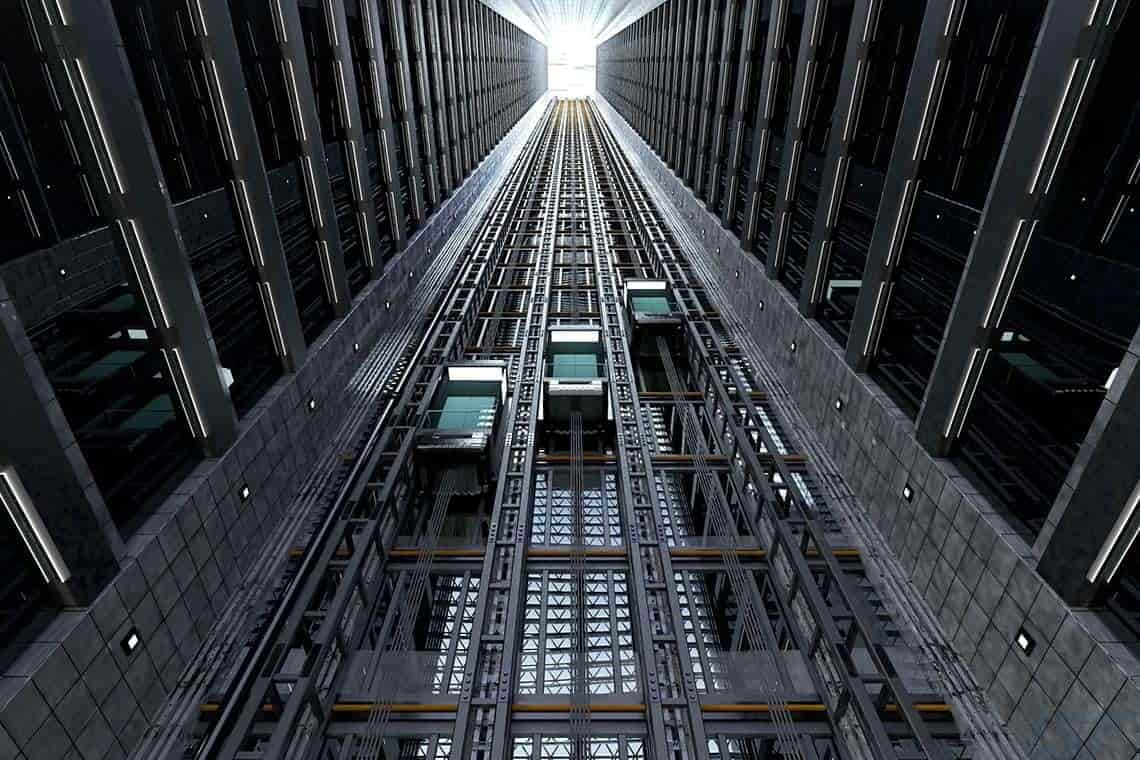Table of Contents
An elevator may be defined as a platform that could either be open or closed and is utilized for raising up or lowering down both people and goods to the upper floors and lower floors. Elevators are means of vertical transportation. The types of elevators can vary from building to building.
In history, it was not compulsory for story buildings to contain elevators. Because of this, many real estate investors neglected to add elevators because they were costly to install and maintain.
1. Types of Elevators
The types of elevators can be divided into many types depending on their use and working mechanism.
a. Based on the Function
Passenger elevators: These are lifts kept in flats, residences, hotels, etc., for the movement of passengers.
Service elevators: These are lifts utilized to move goods along with people.
Goods elevators: These elevators are mainly utilized to move goods, along with lift attendants, and persons for helping with the loading and unloading of the objects.
b. Based on the Working Mechanism
1. Traction Elevators
Traction elevators are lifted that utilize ropes that move over a wheel attached to an electric motor. When the electric motor begins, the wheel comes in motion. This pulls the rope and lifts the elevator to the needed floor levels where the persons and goods need to be overloaded.
The wheel for this management is majorly kept in the machine room for the building on the peak floor. A counterweight is kept to make the elevators better organized by offsetting the weight of the goods and the people. This way, the speed of the wheel and the rope coordination is attained. Traction elevators are utilized for floor levels up to 2000 feet.

Traction elevators are of two types:
a. Geared Traction Elevator: In this type, the wheel is run by consisting of a gearbox attached to the motor. These elevators can get a movement speed of up to 500 feet per minute. The peak movement distance provided by geared traction lifts is 250 feet.

b. Gearless Traction Elevator: In this type, the wheel is straightly connected to the motor. It provides a movement speed of up to 2000 feet per minute and has a peak movement distance of around 2000 feet. It is the main selection for high-rise buildings.

2. Hydraulic Elevators
Hydraulic elevators are utilized for low-rise applications (2-8 stories). It can move at a high speed of 200 feet per minute. Hydraulic elevators can be divided into the following categories:

a. Conventional hydraulic elevators :
They contain a sheave that expands below the floor of the elevator pit. As the elevator comes down, the pit holds the retracting piston. The exact distance it can move is 60 feet.

b. Hole-less hydraulic elevators :
These types of elevators are the same as conventional hydraulic elevators, except they do not need a sheave or hole beneath the pit. The telescopic piston management permits up to 50 feet of moving distance, while the non-telescopic piston permits about 20 feet.

c. Roped hydraulic elevators :
These elevators utilize both ropes and pistons to travel the elevator car. The maximum distance it can move is 60 feet.

3. Machine-Room-Less (MRL) Elevators
Machine-Room-Less elevators can be traction or hydraulic elevators that do not need a fixed control room up the elevated shaft. Here, the machine rests in the override area. For any maintenance and repairs, the unit is accessed from the top of the elevator cab.

4. Vacuum (Air-Driven) Home Elevators
Vacuum elevators do not utilize any cables or pulley systems to run. In spite of this elevator is a tube in covered vacuum management run by managing air pressure. These are majorly utilized for residential applications for single to three passenger models (wheelchair accessible models).

2. Uses of Elevators
The uses of elevators are as follows:
1. People can move from one floor to another easily without more effort.
2. Saves a lot of time.
3. It is used in big buildings such as shopping malls, Apartments, etc.
4. It is used to carry goods without workers.
3. Advantages of Elevators
The advantages of elevators are as follows:
i. It increases security.
ii. It decreases the effort needed to walk on the staircase.
iii. Easy to transport goods.
iv. Provides a greater convenience.
v. Saves a lot of time.
vi. It saves extra space.
4. Disadvantages of Elevators
The disadvantages of elevators are as follows:
i. It is costly to install.
ii. It promotes laziness.
iii. It can get stuck in middle due to power cut-off.
iv. People having Claustrophobia, can’t get into it.
| Read Also: Tallest Buildings in the World |

